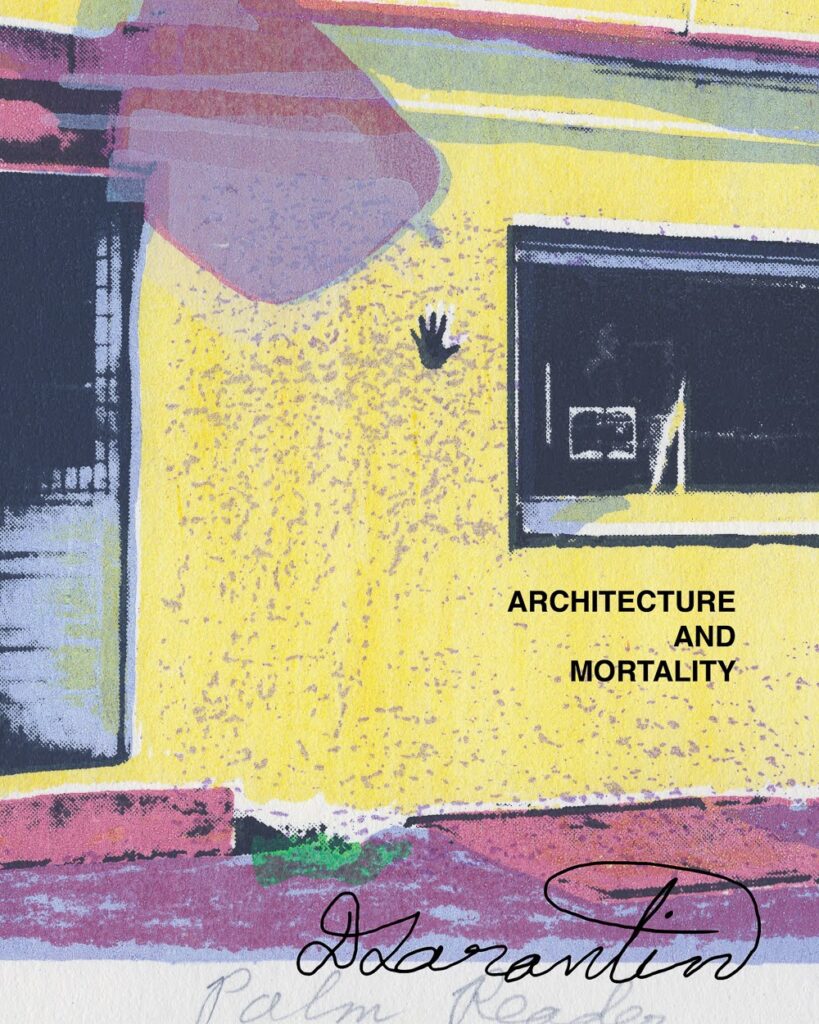Publisher luke kurtis discusses ‘Architecture and Mortality’, a collection of works by Donald Tarantino
Architecture and Mortality by Donald Tarantino is an artists’ book documenting the work of the late artist and printmaker. A collection of prints, drawings, and other works by Tarantino, the book takes us on the journey of a young, queer artist who was in the midst of exploring his passion before being forced to face his own mortality at the height of his journey.
After studying at Philadelphia College of Art, Donald Tarantino settled in New York City, where he became part of the 1980s East Village scene. Working mostly as a printmaker, Tarantino refined his practice at the fabled Lower East Side Printshop.
His art explores the intersection between cities and suburbia, shifting between office buildings and domestic spaces. His images examine the structures we inhabit, interweaving the anxieties they cause, and the joys they elicit.
“He was fascinated both with suburban life and the domestic space as well as city life and skyscrapers,” says Michael Tice, his partner.
Tarantino’s late prints were inspired by the isolated rooms and hallways of the St. Vincent’s AIDS ward, driving home a sense of mortality that loomed all too close. He died in 1988, amid the height of the crisis.
Michael Tice has overseen an archive of the artist’s work ever since, and his collaboration was instrumental in creating Architecture and Mortality, which is a document of an independent gay artist of the 1980s and a memorial to all those lost in the crisis.
Perhaps the most beautiful and devastating part about flipping through the pages of Architecture and Mortality was the fact that I was able to see the world through Tarantino’s eyes; the bright and colorful cityscapes begin to slowly transform into dark gray, black and brown hallways, as he comes to grips with his own imminent demise.
As a gay man who was born in the 1980s, I didn’t experience the height of the HIV/AIDS epidemic. Books like Architecture and Mortality, and television shows and films such as Pose and Philadelphia give much needed insight to a very important and grim time in LGBTQ history. The preservation of these types of legacies provides us not only the opportunity to collectively grieve, but a chance to celebrate the lives of those lost during this difficult time.
The conservation of Tarantino’s art provides us a look into the life of an artist who was taken away much too soon. Through Architecture and Mortality, Tarantino did not die; his legacy lives on, and serves as a reminder of the exceptional and unique talents that he, and so many others like him, possessed.
I had a chance to catch up with luke kurtis — editor, designer, publisher and founder of bd-studios.com, the art and publishing studio behind Architecture and Mortality — to give more insight into the creative process and his connection to Tarantino’s work.
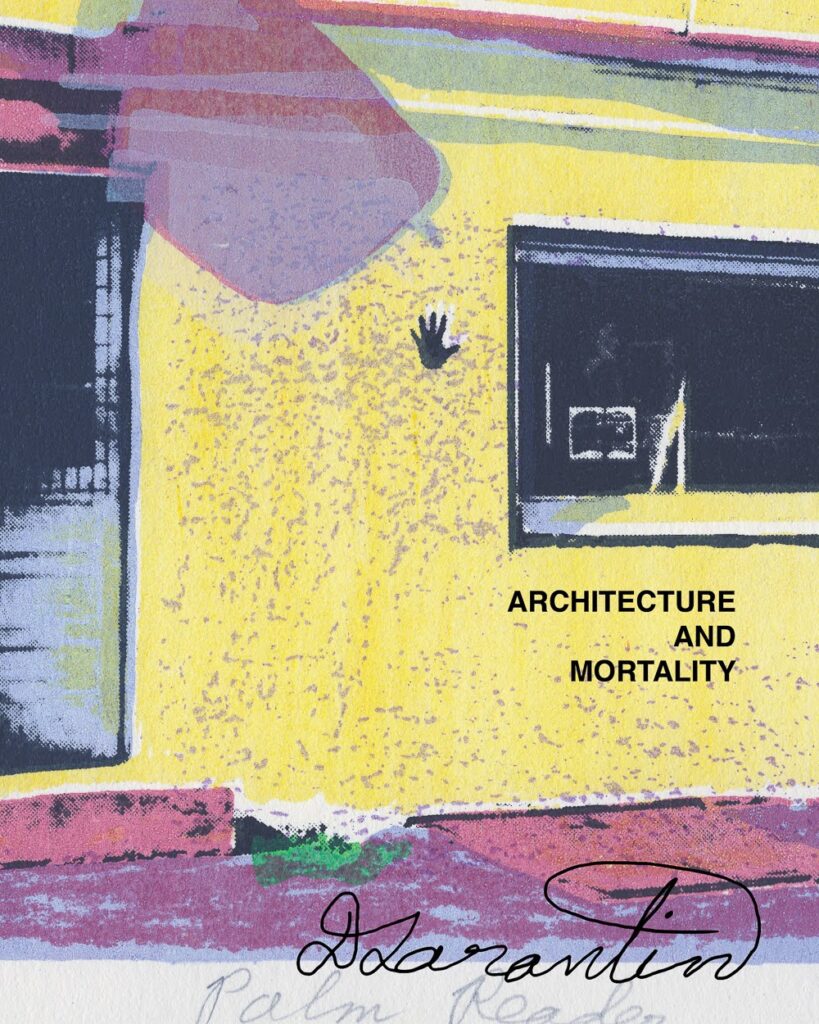
Cover of Architecture and Mortality by Donald Tarantino (designed by luke kurtis) 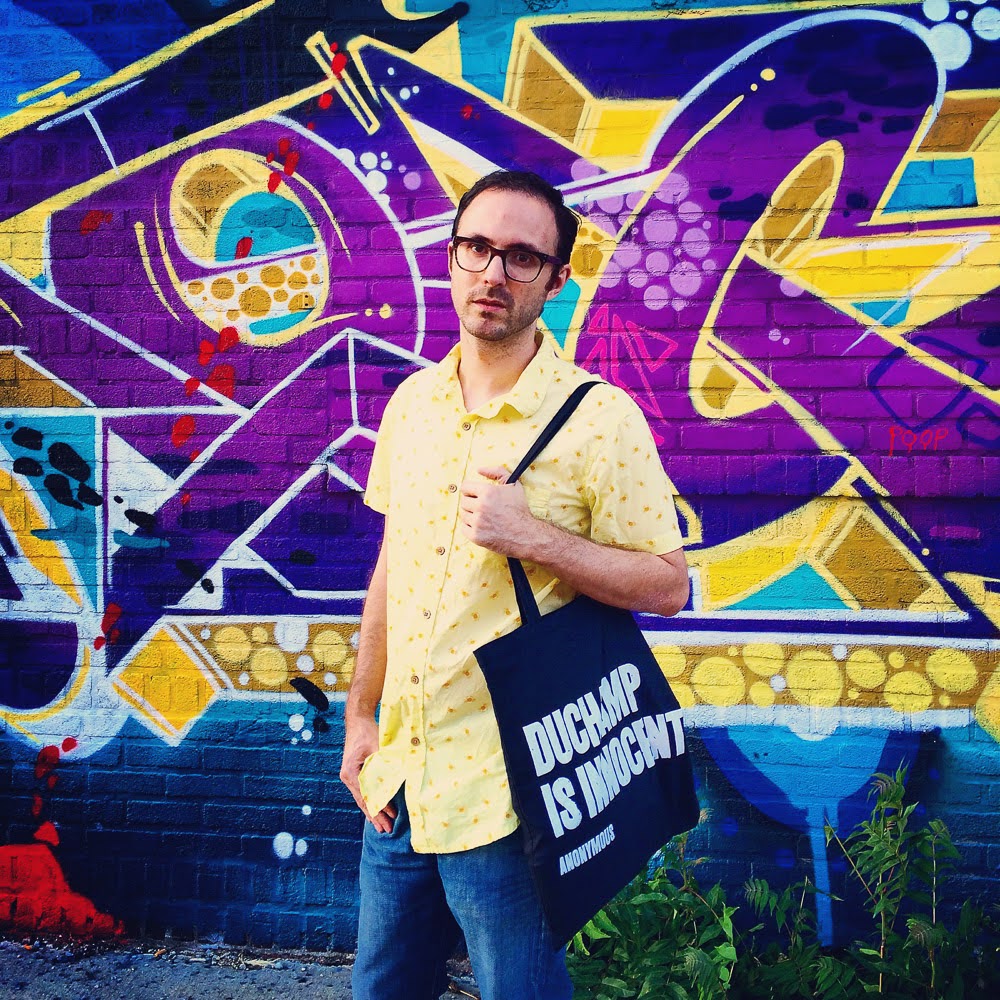
luke kurtis, publisher, editor, and designer of Architecture and Mortality
Kyle Jackson: Hi luke! So, how did you meet his partner Michael Tice, and where did the idea come from to publish Architecture and Mortality?
luke kurtis: Hi Kyle! Well, I’ve known Michael Tice for many years. The initial basis of our friendship was a mutual love of Yoko Ono. Tice was also someone I looked up to. Like me, he was a gay man from the south and had come to NYC as a young artist.
When I began to expand my creative practice and publish other artists, I collaborated with Tice to create his Retrospective (2013) book. Several years later, we started work on another collaboration, his second book, The Male Nude (2019).
While visiting his studio and reviewing his drawings for that project, I happened to see one of Donald’s prints. I asked Michael about it, curious to learn more. Soon he had pulled out a large selection of images.
As Michael told me more about Donald’s life and work, I immediately wanted to turn it into a book. From there, Michael allowed me full access to his archive. I inventoried and digitized all of Donald’s surviving work, curated the images for publication, and provided the project’s overall editorial direction.
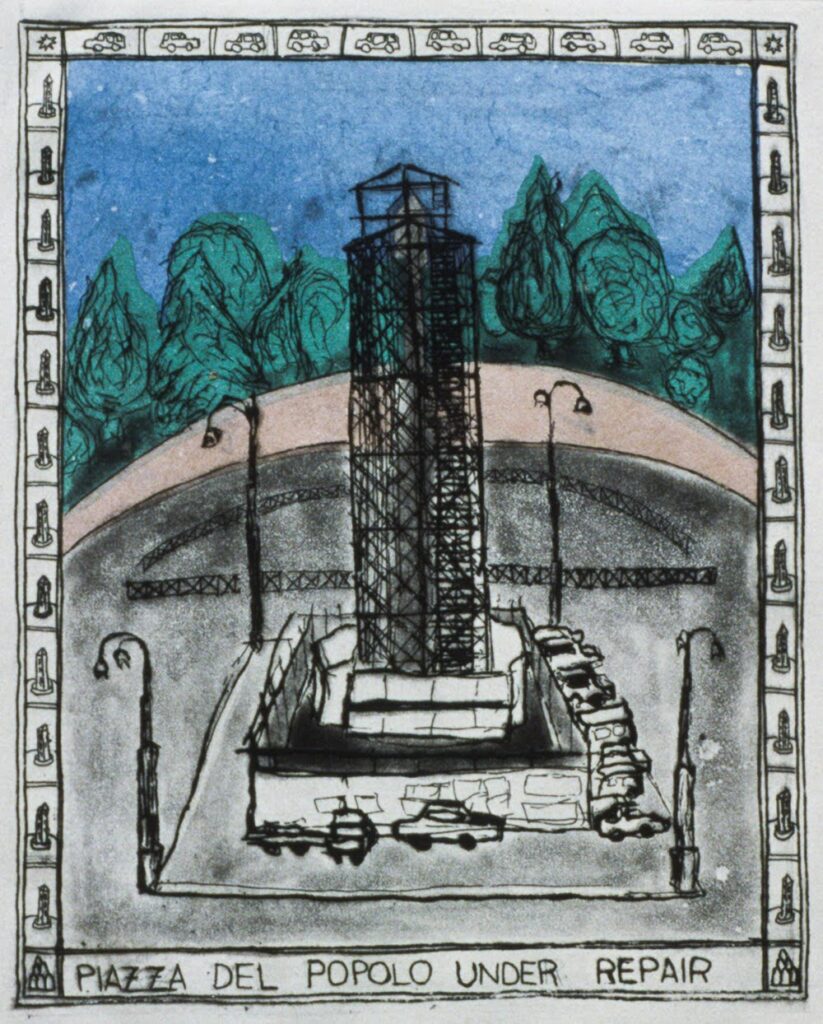
Donald Tarantino, Piazza Del Popolo Under Repair, Dec 1984, drypoint, 3” x 2” 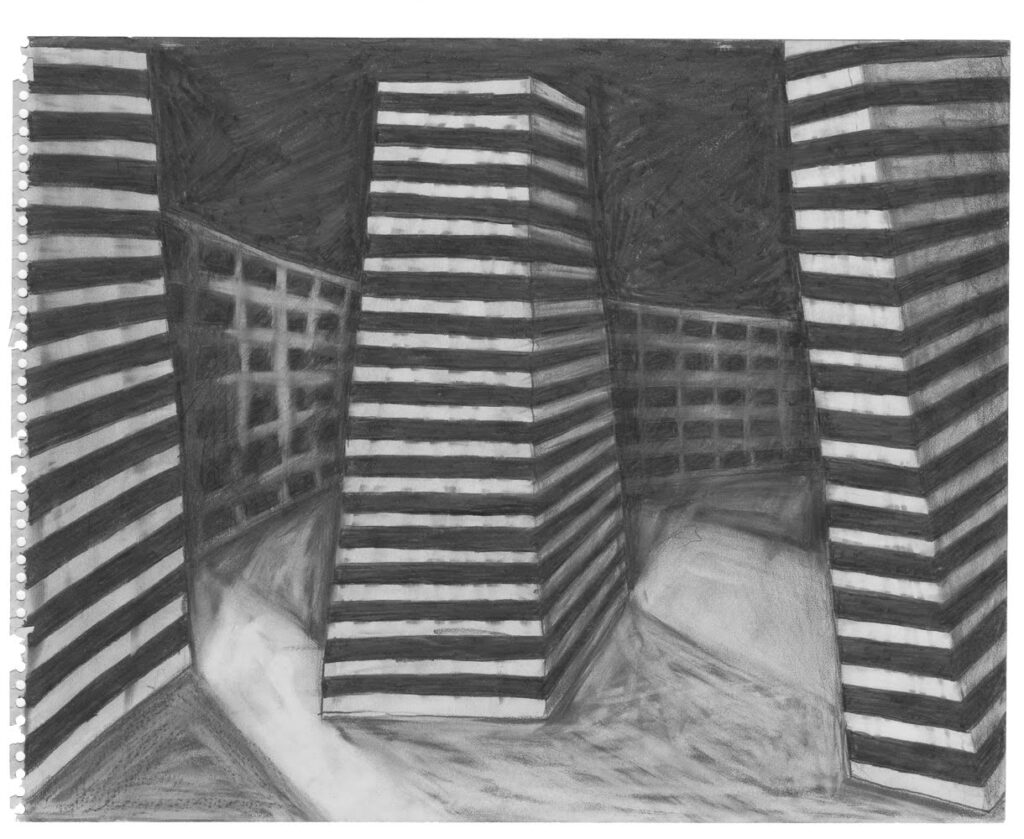
Donald Tarantino, Untitled, n.d. (circa 1984), graphite on paper, 11” x 14” 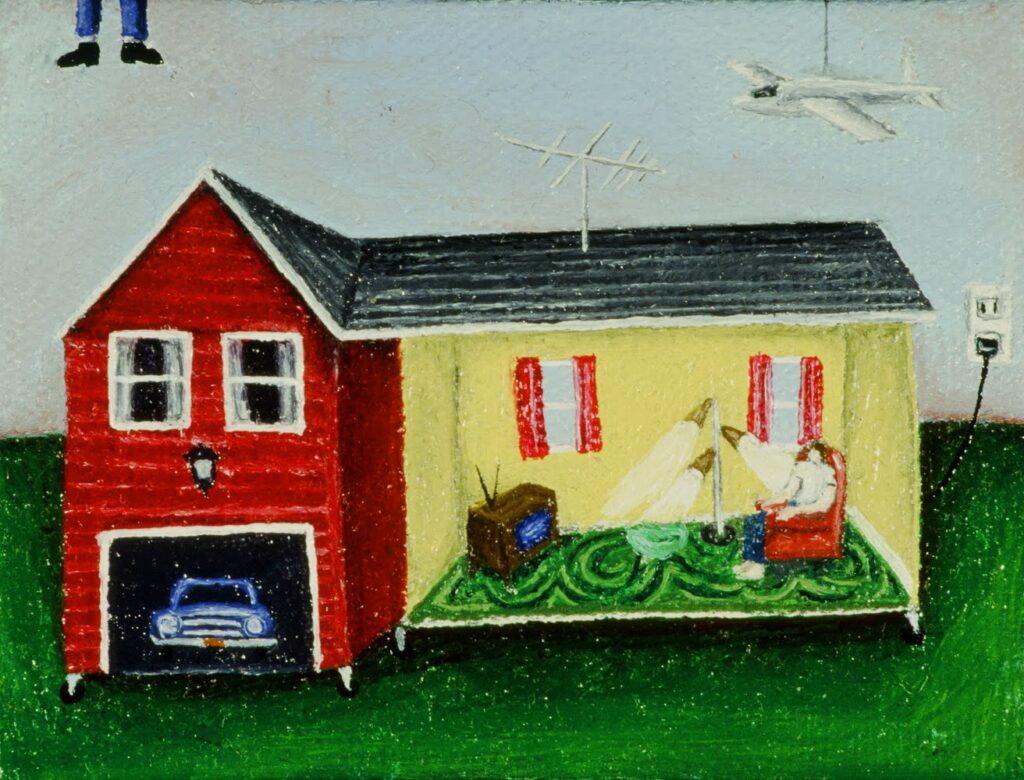
Donald Tarantino, Untitled, Sep 1987, oil on canvas, 4” x 5”
KJ: That’s amazing! Being born in the 1980s, I did not experience the height of the HIV/AIDS epidemic. I hear many stories and I often wonder what it was like. Looking through Architecture and Mortality, I felt Donald Tarantino start to grapple with his own mortality as his art went from beautiful skyscrapers to hospital hallways. How did experiencing this make you feel? In what ways did you learn, identify or connect with what was shared through his art?
lk: Donald definitely grappled with his own mortality through his art. Death was clearly something he contemplated. Even the way he expressed his interest in architecture, you get a sense of the role buildings play in life: the day to day grind of work, the domesticity of floor lamps and television sets, and the grueling commute to get from place to place.
Donald saw life and death wrapped up in these everyday objects, activities, and situations. And then came the St. Vincent’s AIDS ward at the end of his life. On the one hand, hospitals are just another space we move through, an indication of natural life and no more tragic and dark than, say, his earlier prints of ancient ruins or modern cityscapes.
But this is specifically St. Vincent’s, not only where Donald battled his illness but countless other gay people who were also victims of the crisis did so too. St. Vincent’s no longer exists, so Donald’s images of his experience there help us remember this vital if fraught part of queer history.
Then, I think about how he was only twenty-five years old when he died at that hospital. All of that living, all of that art, packed into such a short time. Working on this book made me realize how important it is to share what we do as creative people, and that’s why I do what I do as a publisher.
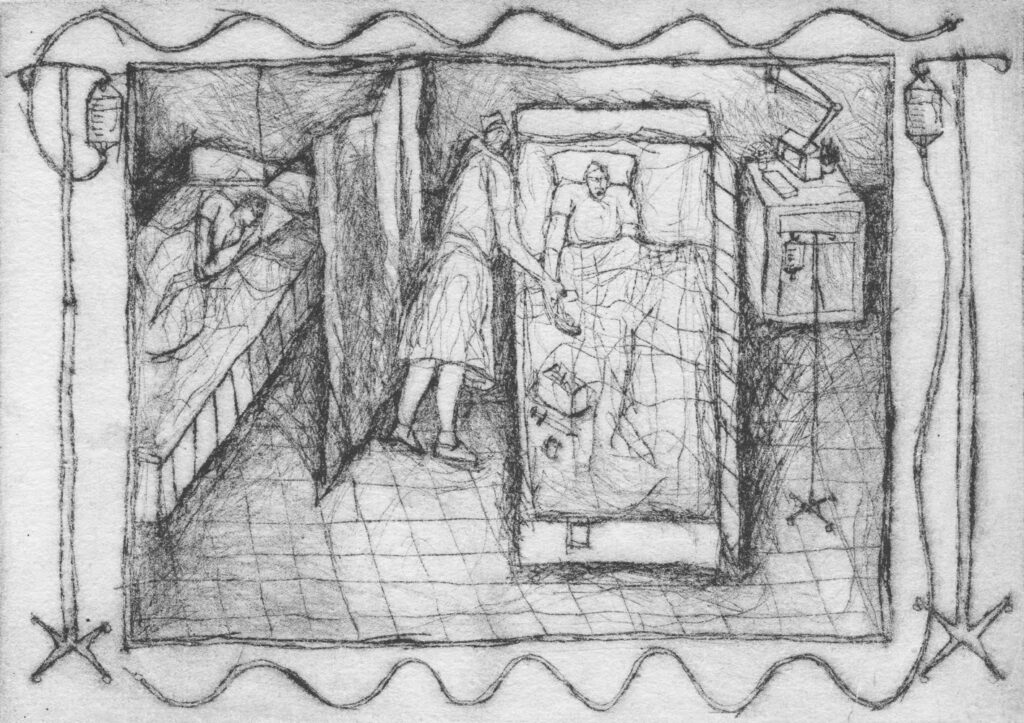
Donald Tarantino, Untitled, 1988, drypoint, 5” x 7” 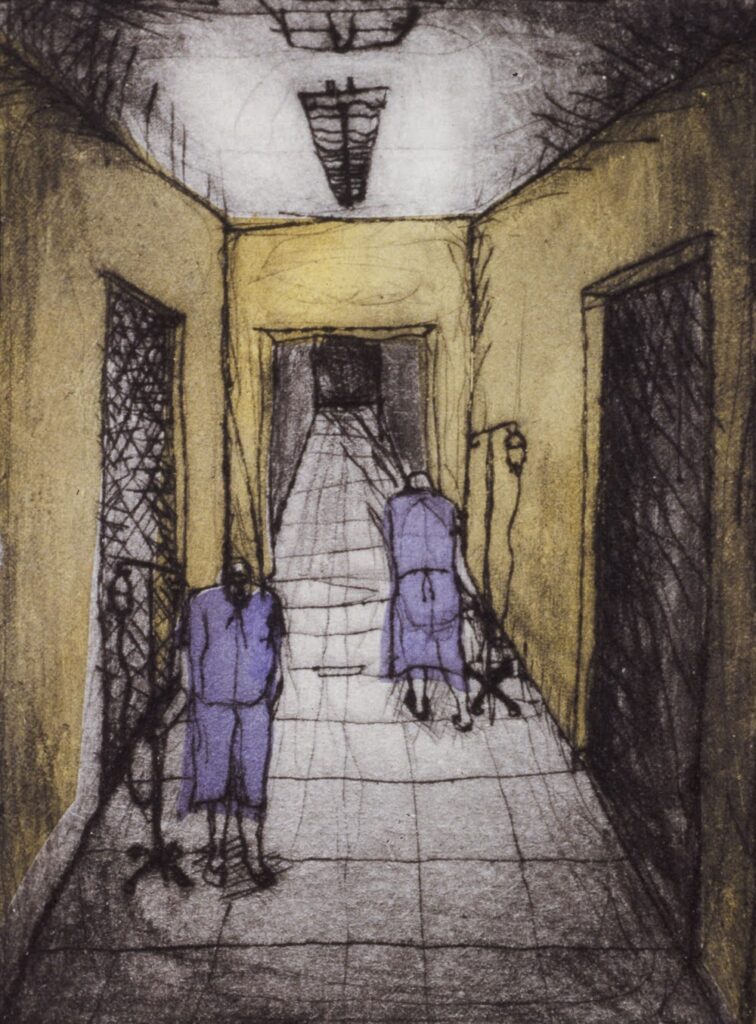
Donald Tarantino, Men With IV Poles, Oct 1987, drypoint with chine collé, 3” x 4” 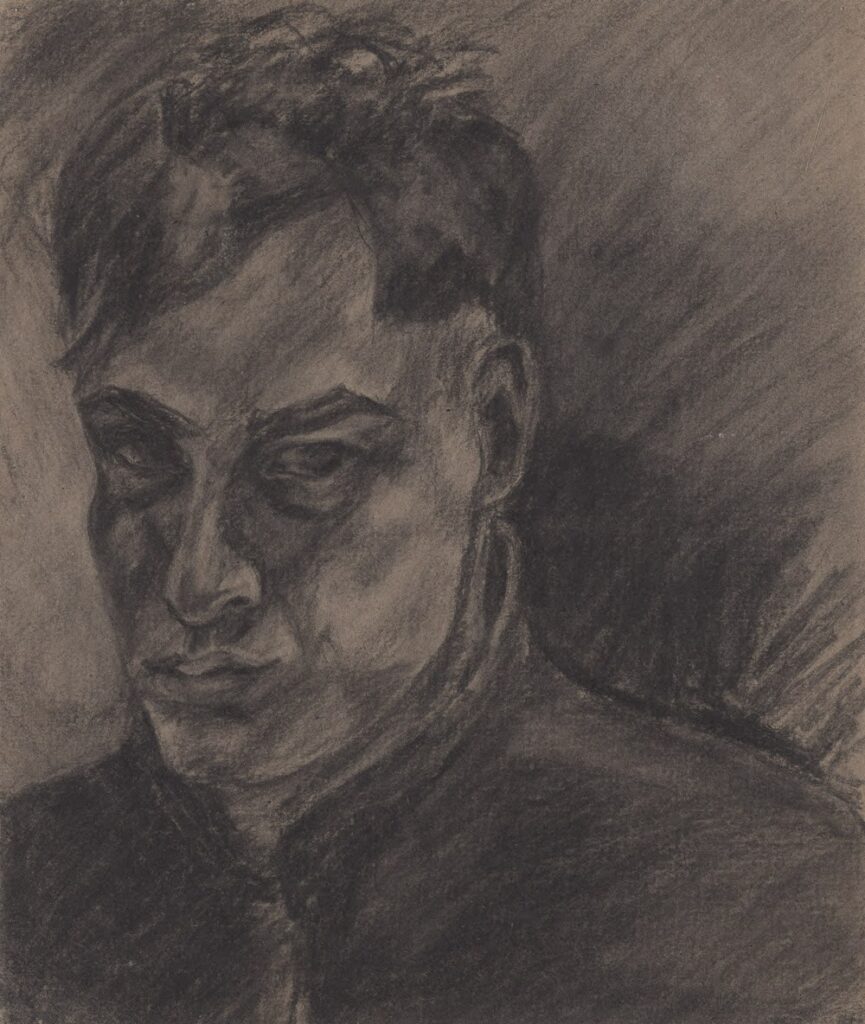
Donald Tarantino, Self-Portrait, n.d. (circa 1984), graphite on paper, 12” x 12”
KJ: How did you and his partners decide which pieces would end up in the book? What significance, if any, did many of the chosen pieces hold to you or his partners?
lk: All of the work in the book is from Michael Tice’s collection. He has maintained an impressive archive of Donald’s art ever since his death and, as I previously said, was generous enough to allow me not only full access to his collection but also editorial control over the project.
Michael Bacon, who is a photographer, contributed a selection of portraits he had made of Donald. I approached the editorial process as if I was designing an exhibition, highlighting the common themes throughout his work.
I wanted to create an experience that didn’t depend upon familiarity, so that anyone could pick up the book and intuitively understand the life, the death, and everything else wrapped up in Donald’s images. I hope that comes through!
Additional comments from Michael Tice:
When Donald did the series of works depicting his time in the hospital in 1988, I was struck by the raw honesty of his portrayals on the etching plates. He went for a powerful look at his own mortality, even though the works themselves were small in scale. He summed up what he was going through in a few lines in etching or drypoint on small plates. I think this made the works more personal, and confrontational in a sense.
I have a lot of Donald’s works that I have kept in my home since his death. I rotate the works that are framed on my walls. They remind me of Donald’s strength and courage and ability to face mortality head-on. They are evidence of his strong will and passion for life and art. I’m thankful that this book will be there to inspire and enlighten future generations.
Follow luke kurtis/bd-studios.com on Instagram, Flickr and YouTube.
To purchase copies of Architecture and Mortality, visit bd-studios.com/library/architecture-and-mortality.

